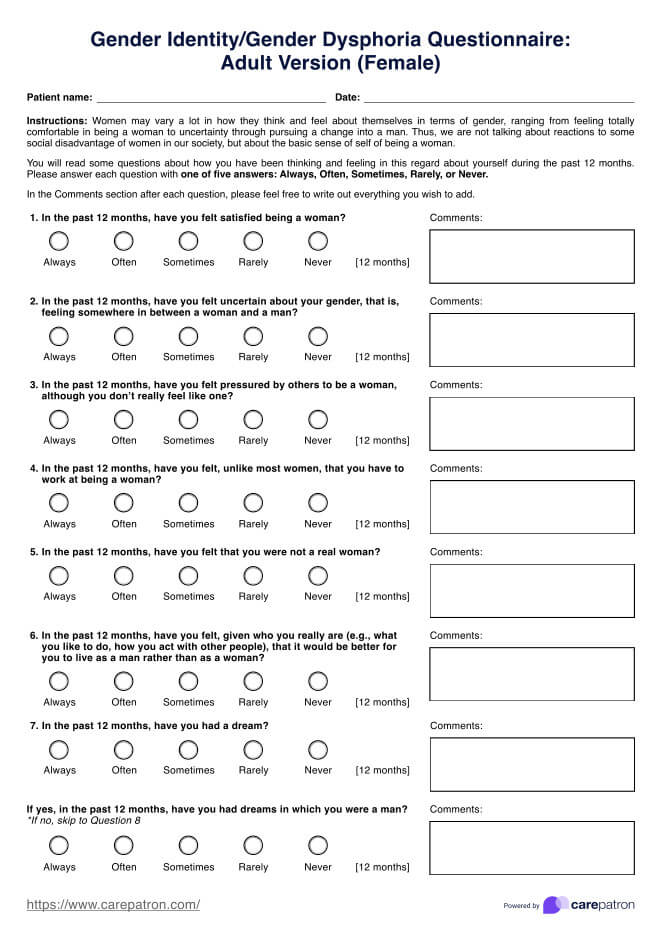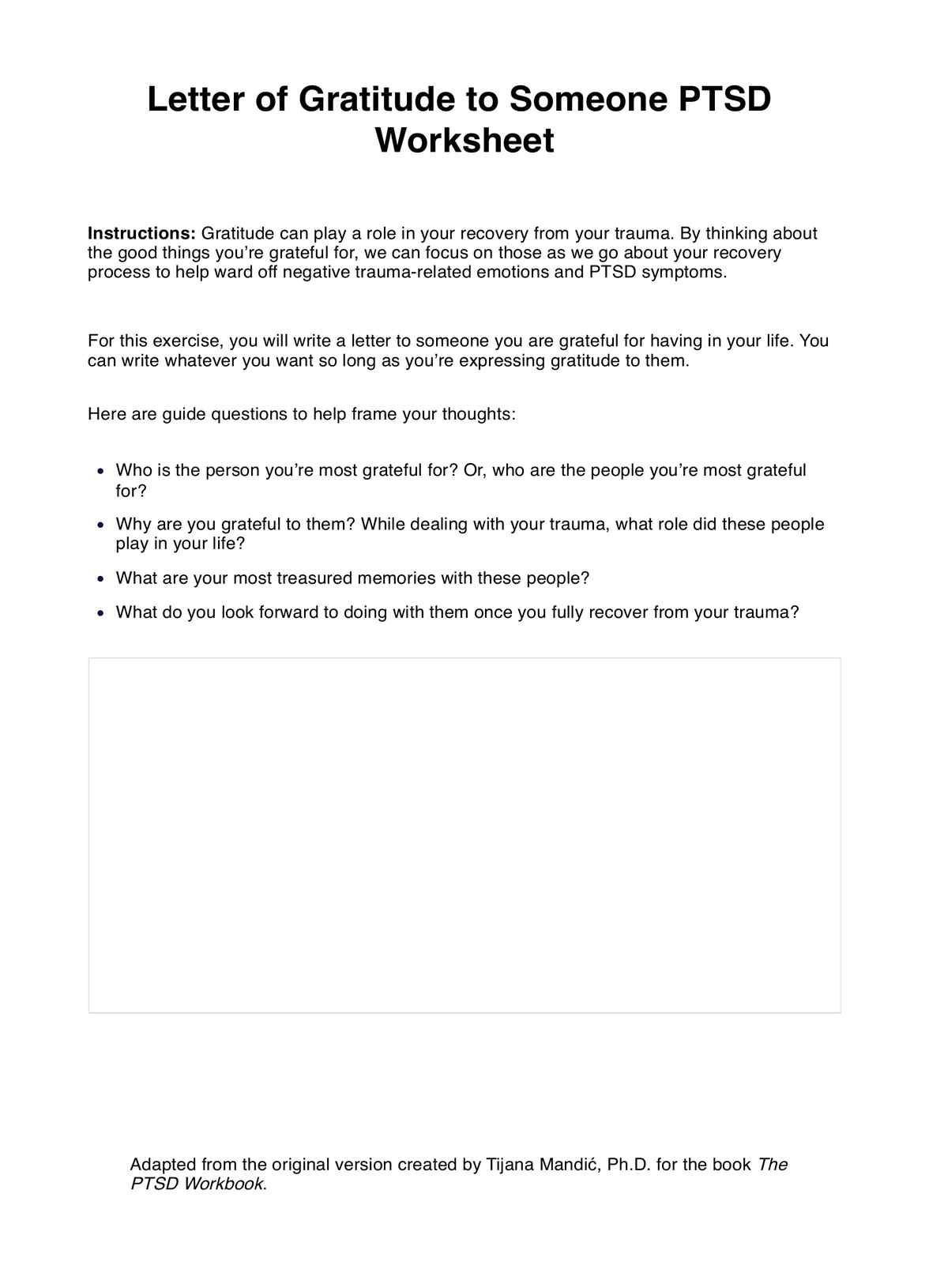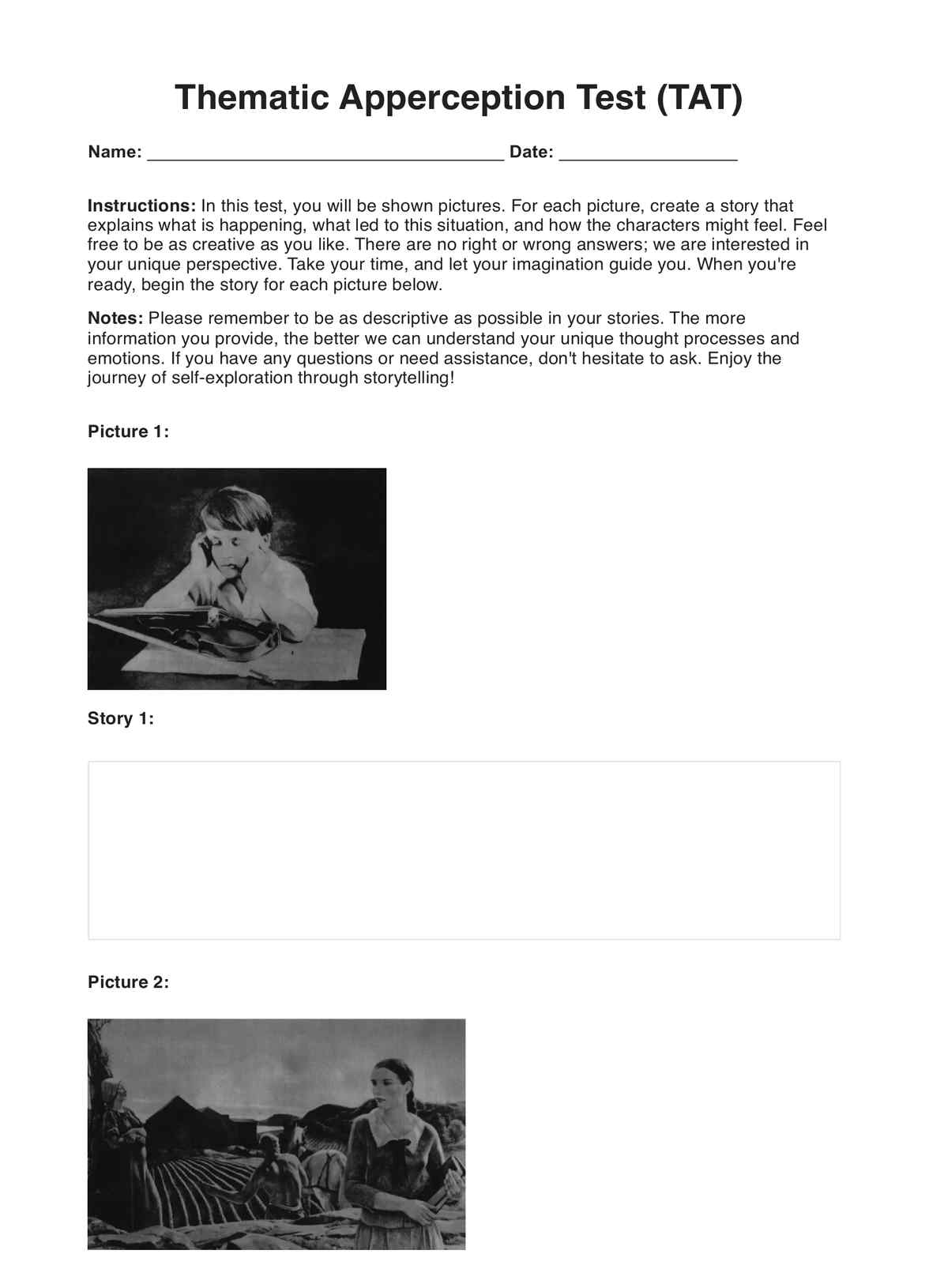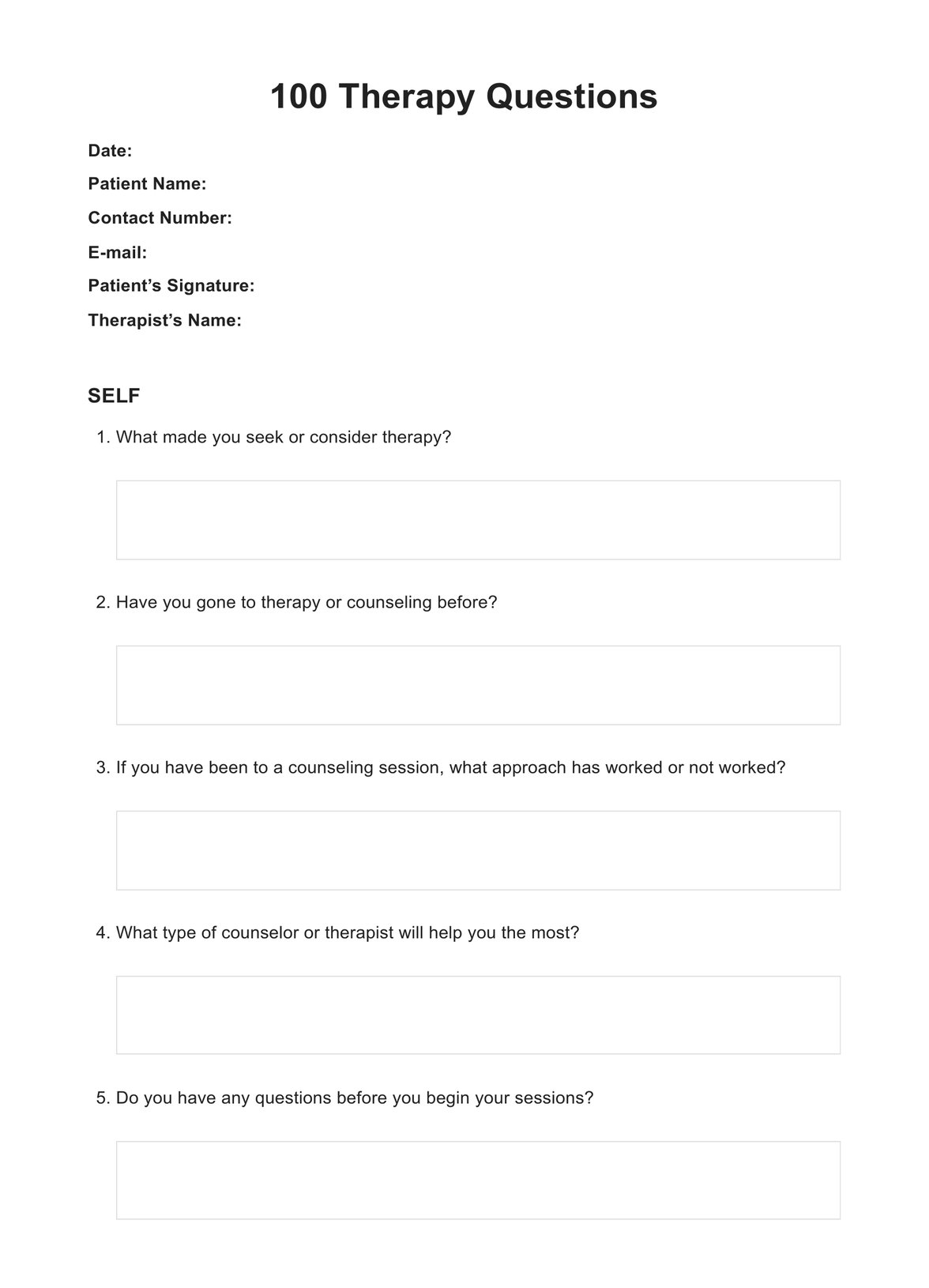Positive Attributes Lists
Discover our comprehensive Positive Attributes List template to enhance personal and professional growth. Download the free PDF template now!


What is a Positive Attributes List?
A Positive Attributes List is an insightful tool meticulously curated to help individuals identify and understand their innate strengths and qualities. At its core, it's more than just a list—it's a reflective mirror that unveils characteristics that often remain unrecognized or underappreciated.
Originating from psychology and personal development, this list provides an evidence-based framework to bring out the best in oneself.
For healthcare professionals, this tool holds added significance. In a realm where empathy, communication, and interpersonal understanding are paramount, recognizing one's strengths is crucial. For instance, a surgeon might pride themselves on their technical skills, but it's equally vital to understand and nurture their communication, empathy, or teamwork attributes.
In a profession with high stress and emotional challenges, having a clear perspective of one's positive attributes can serve as a grounding and motivational force.
Beyond personal reflection, the also aids peer and team evaluations. It offers a standardized method to understand team dynamics, enabling healthcare teams to operate more cohesively. Recognizing each member's strengths can foster a work environment where individuals feel valued and understood, enhancing morale, motivation, and productivity in the challenging healthcare landscape.
Positive Attributes Lists Template
Positive Attributes Lists Example
How does it work?
Understanding and harnessing the power of the Positive Attributes List involves a systematic process. While the list is straightforward, it's essential to approach it with an open mind and genuine introspection.
Step 1: Familiarization
Before diving in, take a moment to go through the entire list. Familiarize yourself with each attribute, understanding its meaning and significance. This process sets the foundation for a more insightful assessment.
Step 2: Self-Assessment
With clarity on each attribute, assess yourself or the person of interest against each attribute. It's crucial to be honest and unbiased. Mark or highlight those attributes that resonate strongly, reflecting genuine strengths.
Step 3: Comprehensive Review
Once you have marked the relevant attributes, take time to review them. Analyze dominant strengths patterns and notice any crucial attributes that might seem lacking.
Step 4: Reflective Analysis
Beyond just identification, deeply reflect on each marked attribute. How do these strengths manifest in your daily life or profession? Are there strengths you've been underutilizing? This is a step of introspection and personal understanding.
Step 5: Actionable Insights
Translate the insights from the list into actionable strategies. This process could involve honing particular strengths, training to enhance specific attributes, or acknowledging and appreciating these qualities in daily interactions.
When would you use this Form?
The Positive Attributes List is a comprehensive tool designed to illuminate individuals' inherent strengths and qualities. In the ever-evolving world of healthcare, self-awareness and understanding are paramount for personal growth, effective patient care, and team dynamics. Professionals constantly face challenges – from understanding patient needs to collaborating efficiently with colleagues.
The Positive Attributes List serves as a bridge, offering clarity, promoting effective communication, and fostering growth and understanding.
The tool's versatility is its strength. Its systematic approach transcends mere self-assessment and becomes an essential asset in various healthcare scenarios. Imagine a doctor trying to find the best way to communicate with a patient, a nurse seeking to understand her strengths for better team collaboration, or even a therapist aiming to unlock the potential in their patient; the Positive Attributes List has applications in all these scenarios and more.
For healthcare professionals, using this form becomes second nature. Whether for introspection, enhancing team relationships, optimizing patient care, or even for recruitment purposes, the Positive Attributes List serves as a guide, fostering a culture of understanding and personal growth in the complex healthcare landscape.
Uses for relevant practitioners:
- Self-Evaluation: For clarity, personal development, and understanding one's unique approach to patient care.
- Team Building: Building more robust, efficient teams by understanding and leveraging each member's strengths.
- Patient Interaction: Understanding a patient's strengths can be pivotal to their treatment in therapeutic settings.
- Recruitment: A tool in the hiring process to assess and understand the strengths of potential candidates.
Benefits
In the dynamic world of healthcare, where precision, empathy, and understanding are crucial, the Positive Attributes List stands as a beacon of self-awareness and growth. It's more than just a checklist; it's a transformative guide that casts light on the nuances of one's character, enabling healthcare professionals to harness their strengths for optimal patient care and professional growth.
1. Self-awareness
Delving into the list encourages introspection, revealing patterns, strengths, and potential growth areas. It's the first step to understanding one's role and effectiveness in healthcare.
2. Improved Communication
Clear communication is the backbone of healthcare. By recognizing one's strengths and those of others, conversations become more productive, clear, and compassionate.
3. Enhanced Patient Care
With better self-understanding comes the ability to adapt and provide care tailored to each patient's needs. The list helps professionals fine-tune their approach, leading to more effective and empathetic patient care.
4. Professional Growth
Recognizing strengths provides a roadmap for continuous learning, goal-setting, and career progression.
5. Team Synergy
Teams work best when each member understands and plays to their strengths. The list fosters this understanding, leading to better team dynamics and efficiency.
6. Goal Setting
With clarity comes the ability to set tangible, realistic personal and professional goals, thus fostering continuous growth.
Commonly asked questions
Healthcare professionals, including doctors, nurses, therapists, and counselors, use the Positive Attributes List for self-assessment, team-building, and patient evaluation.
They are utilized during performance reviews, team-building sessions, personal growth exercises, patient counseling, and recruitment processes in healthcare settings.
The list serves as a checklist. Individuals mark attributes that resonate with them, analyzing the checked attributes to derive insights about predominant strengths and potential growth areas.


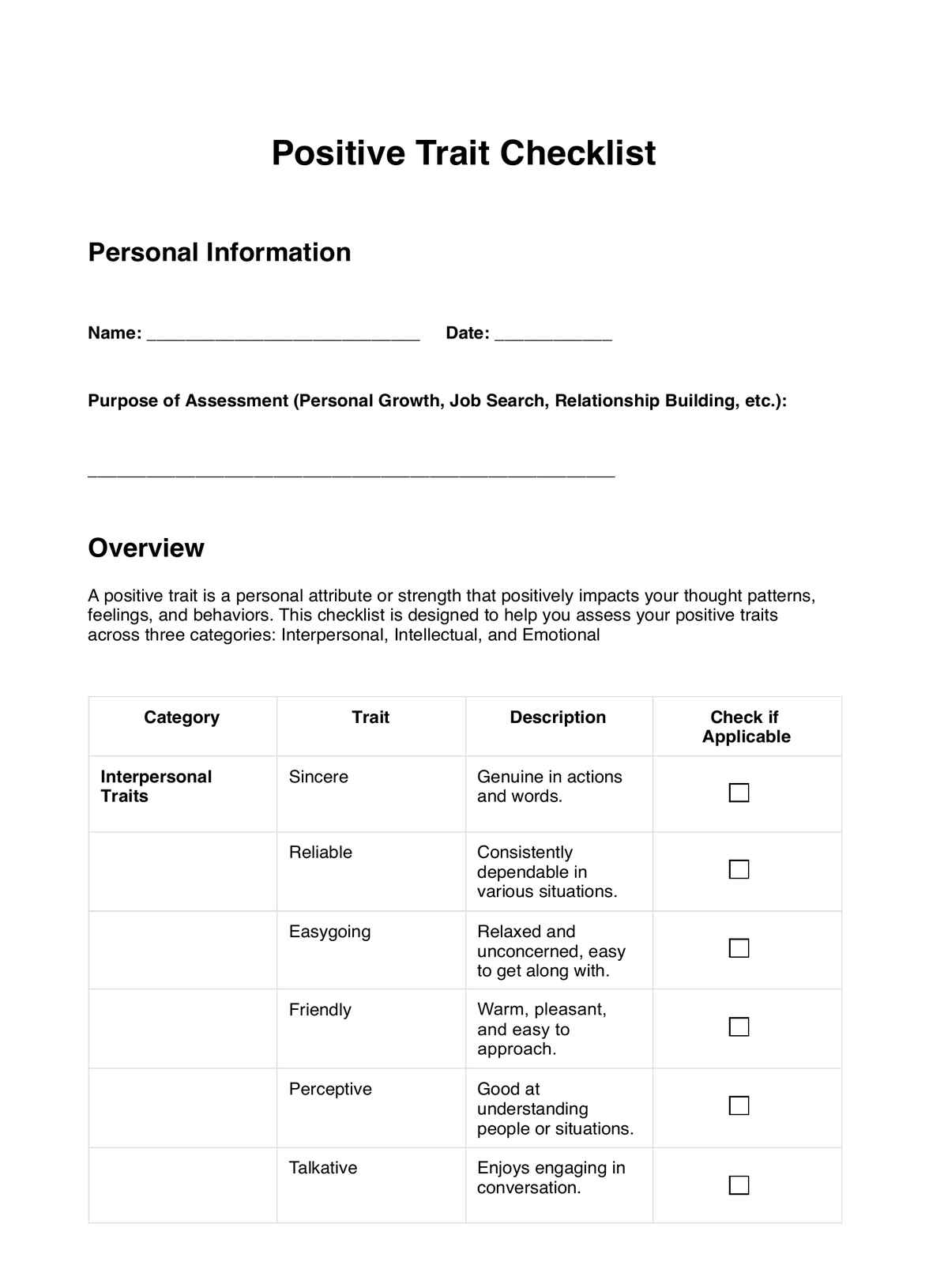
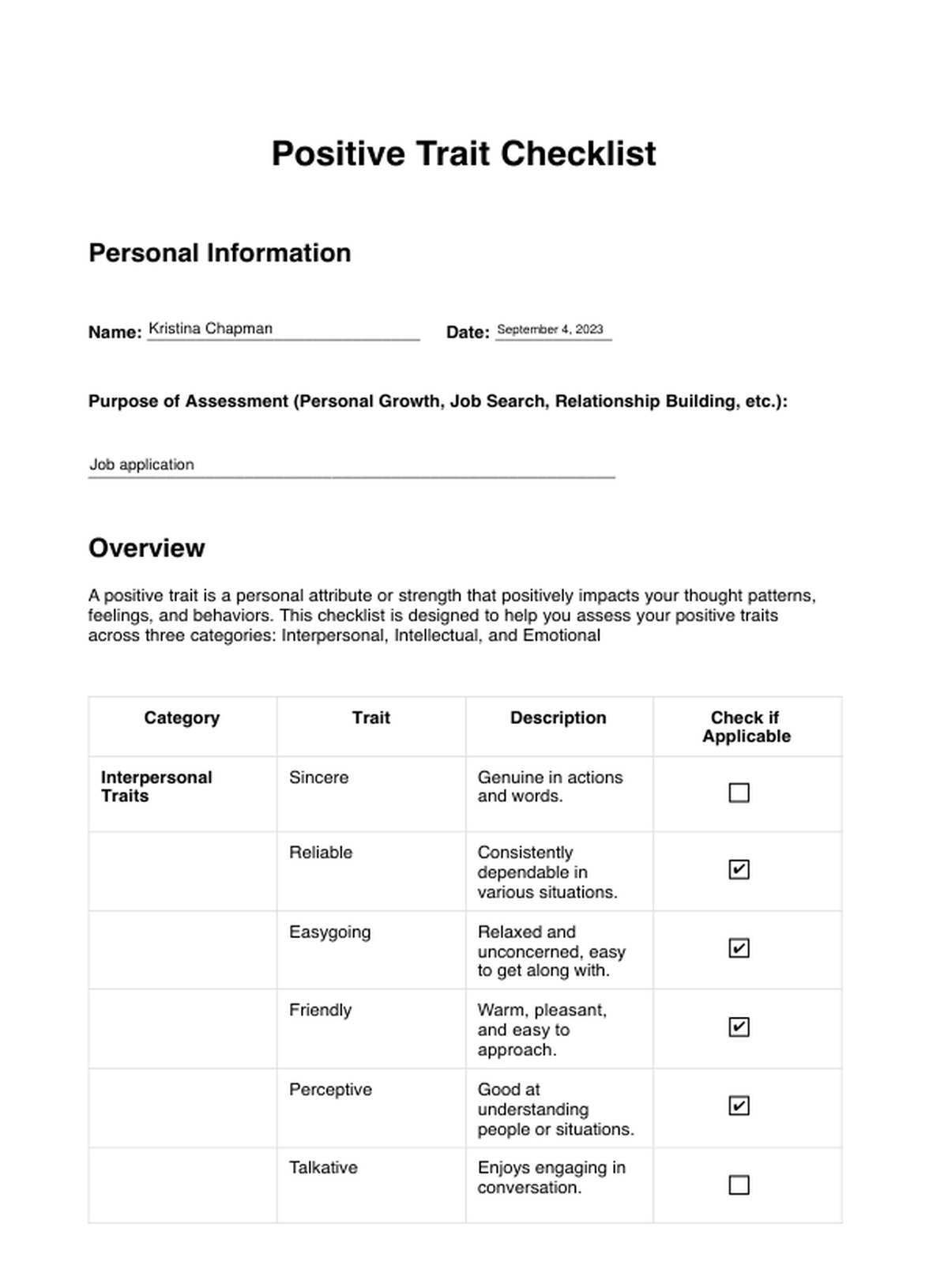








-template.jpg)


























































































